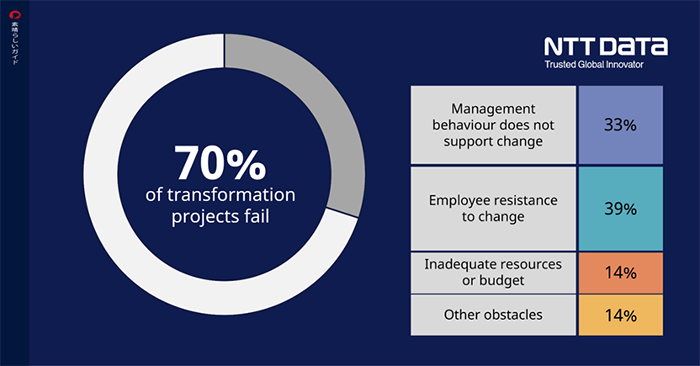We live in an age of disruption: one that many clients are experiencing acutely. In all key verticals that NTT DATA UK supports – including telecommunications, banking, media, automotive, and insurance – we’re having conversations with C-suites on how to improve customer experience whilst reducing cost. Getting the balance right is now more important than ever.
Normally, these cost reduction programmes typically result in Operational Cash Flow (OCF) savings of 3-5% per annum. But to make a radical shift of 7% and above, which is often the ambition in the current climate, organisations will very likely need to commit to a strategic programme focused on encouraging agile delivery and real transformation to reduce OPEX and CAPEX. It is easy to set higher target but in my experience they are extremely hard to achieve if you are truly talking about bottom line savings, rather than some internal financial reporting mechanism.
Both CAPEX and OPEX are likely to undergo major changes. The old revenue models that many industries relied on, focusing on solely on the physical environment, have quickly become outdated. You only have to walk in any town centre to see how painful this transformation is. Contrastingly, digital channels, which were once often an adjunct, have now in many cases become the central pillar of the customer experience and for some industries the only way to market.
This rapid evolution to ‘phygital’ has left once-predictable financial models utterly out of kilter. In several sectors, there are now huge quantities of stranded physical assets compared to just one year ago. The damage that this is doing to company balance sheets is only just being understood.
Businesses need to deliver cost and digital transformation projects to adjust to this new normal – as they should. But these digital transformation projects should also come with a health warning. Seven out of ten projects are deemed to be failures. Change is good, but change needs buy-in from sponsors and team members, combined with sufficient investment otherwise they are doomed to failure. Getting this right first time is now more important than ever for many businesses.

Source: McKinsey & Co
So what do the 30% of successful cost transformation projects do that the others don’t? Below, I identify the five fundamentals for enacting successful change:
1. Promote personal and organisational leadership
Manage the change or it will manage you. When leaders fall short on fulfilling expectations, teams become disillusioned, confused and unmotivated. Change doesn’t happen when the vision isn’t communicated successfully. Be clear on the need for change and why it is necessary. Cost transformation leaders need to ensure changes are made efficiently and sustainably, they ensure the team have the tools to carry out their work and everyone is empowered and motivated to do their job. Any cost transformation needs to be done with fairness, ethically and with integrity given the real impact it can have on people’s lives.
2. Focus on experience
Foster a positive experience. Change usually affects the customer or employee experience so this needs to be considered to foster a positive experience. Cutting costs should not come at the “cost” of a decent customer journey. Rather, new efficient digital technologies should enhance the journey. CX customer journeys cut across organisational boundaries, so change can be difficult to push through successfully. The change story needs to be compelling to the end user. The ability to self-serve is only better for a customer when it works well. Making a customer jump through extra hoops and making the experience poorer, just so you can save short term costs is not transformation; it is a short term fix which could give you long term pain. Everyone has experience call centre and chat bot hell where you cannot break out to get your question answered.
3. Perform as one team
Change is complicated. Working together across teams towards a vision that is clear and emotionally compelling is the surest route to success when it comes to transforming your cost base. Both IT, finance and operations need to act in tandem to realise cost savings. The targets needs to be jointly owned and the delivery realised together to make it sustainable. Getting the basic governance right and holding regular meetings where people are responsible for delivering is the key to success.
4. Create and understand impact
Successful change results in impact. The more radically you transform your cost base, the more radical the organisational change will be. However, change mustn’t happen for the sake of change. There needs to be a clear end goal that’s communicated through the team. Just taking out short term cost and not linking it to a clear strategy is storing up trouble for later. Stakeholders need to be bought in and the team needs to understand the vision.
5. Communicate and collaborate your story
Communicate regularly. Leadership can’t lead without communication, and the team cannot act as One Team without collaboration. Communication must be baked in from the outset, using the communication methods that make the most sense for the team. It doesn’t only keep teams aligned, it fosters trust and builds relationships. Cost Transformation programmes can be stressful times for those leading them and also those on the receiving end. There needs to be a comprehensive comms plan in place to manage the organisation through large changes.
Conclusion